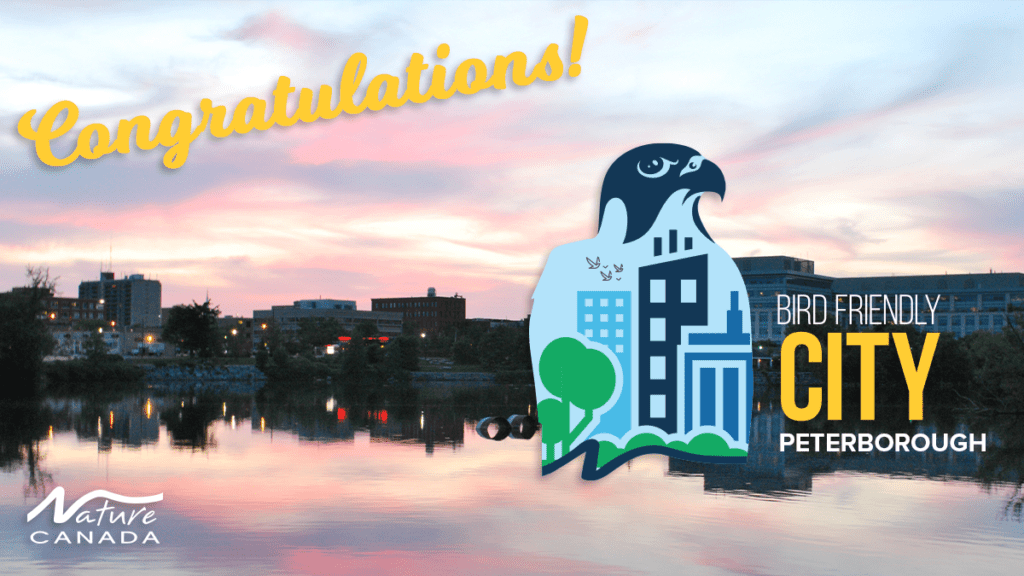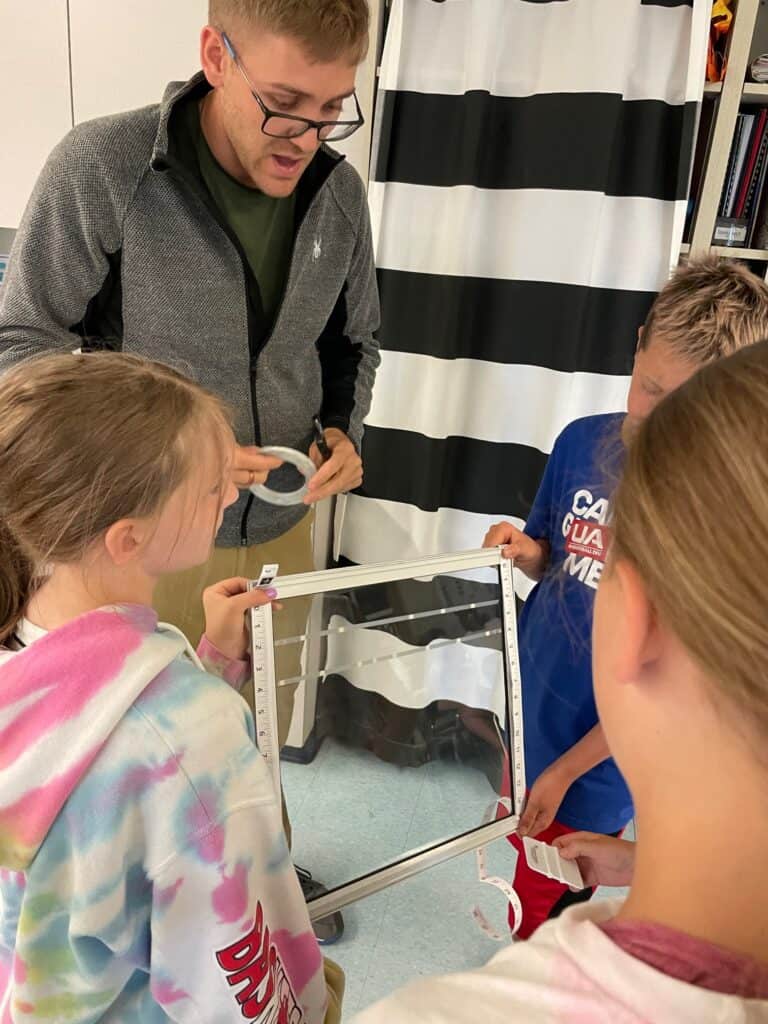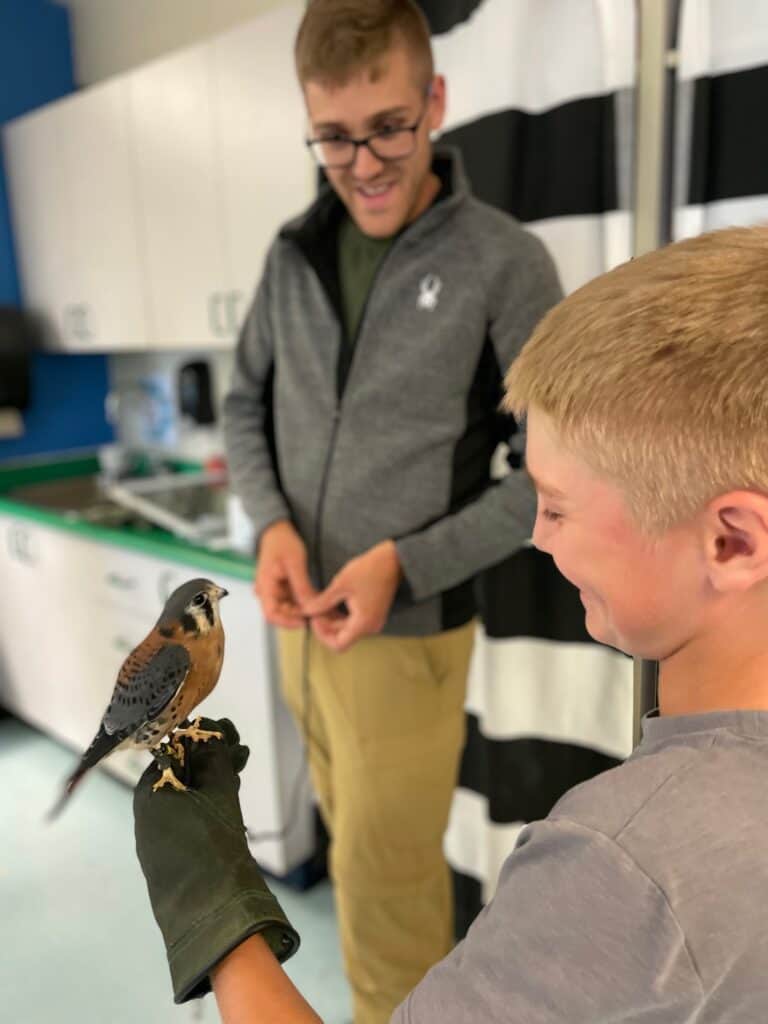City well on the way to becoming a safer place for wild birds
Peterborough Examiner – June 10, 2022 – by Drew Monkman
I can trace my life-long fascination with birds to having grown up in a Peterborough neighbourhood with easy access to natural areas like Jackson Creek. Bird-rich greenspace was only a short walk away. The city offered opportunities for nature to be a huge part of my life.
We are fortunate in Peterborough, because many such opportunities still exist. Bird watching in Peterborough can be excellent, partly because the city is located on the Otonabee River, a migration route that birds have used for millennia. What’s changed, however, are the numbers. There are three billion fewer birds in North America today than 50 years ago. Nearly all of these losses are caused by human activities – from habitat destruction and predation by domestic cats to window collisions and climate change.
Simply put, birds need our help. This includes birds living in or passing through Canada’s quickly expanding urban areas. But there’s good news. Nature Canada recently announced that Peterborough has been certified as one of only 11 Bird Friendly Cities in Canada. As Councillor Kim Zippel said, “Becoming a Bird Friendly City will build on the stewardship efforts of our citizens and will ignite an even greater understanding and respect for our relationships and interconnections with the natural world.” City Council will give final approval to the certification on June 27th.

The goal of certification is to provide a clear standard that reflects what a city needs to do to make it safe for birds. It is also a badge of honor. It tells the world that a city like Peterborough is doing things to reverse bird declines by reducing risk factors, improving habitat, and promoting awareness.
The designation is the result of a lot of hard work by the Bird Friendly Peterborough (BFP) team headed up by Reem Ali of the Peterborough Field Naturalists in collaboration with Kawartha Wildlife Centre (Thom Luloff), Riverview Park and Zoo (Cathy Mitchell), GreenUp (Vern Bastable), Trent University (Josh Russell), and Camp Kawartha (Jacob Rodenburg). City of Peterborough liaison James Byrne and City Councillor Kim Zippel have also provided ongoing support.
In less than two years, the BFP Team was successful in securing grants to support the development of a website and to purchase materials for educating the public on different bird protection measures. Go to www.birdfriendlypeterborough.ca/ for a wealth of information and resources including how to make your home and yard more bird friendly. You’ll also find upcoming events like the opening of Peterborough’s first official Bird Friendly Trail with fun activities and marked birding spots along the Otonabee River.
An annual competition to select our City Bird of the Year will be launched on August 1st. “Our goal is to have this annual competition serve as an opportunity to develop educational materials about different birds in our community and inspire many more community members to participate in local efforts for protecting our bird population,” says Reem Ali. Information about how to vote will be available on both the City and BFP websites. The winning bird will be announced on September 23rd.
While certification is indeed great news, the real work is just beginning. Nature Canada’s scoring rubric for cities is focused on three main categories: Threat Reduction; Habitat Protection, Restoration, and Climate Resiliency; and Community Outreach and Education. Peterborough gained entry-level certification, which means there’s lots of room for growth across all categories in order to improve our certification level.
The City has already implemented a number of bird friendly policies and actions. These include establishing a “no-roam” by-law for cats to reduce the impact of cat predation on wild bird populations. There are also important measures in the Peterborough’s update to the Official Plan (2021) such as protecting natural heritage features and requiring “bird-friendly design measures for predominantly glass buildings.”
Why is this important?
Birds are a gateway to appreciating, understanding, and working to conserve nature in all its dimensions. It is through an initial fascination with birds that my own interest in all aspects of the natural world and conservation grew. Birds are connected to everything else in the environment. They are also everywhere and easy for people to connect with. Birds were a saving grace for so many people during the pandemic. People were paying so much more attention to birds and seeing and hearing them in a way they didn’t before. Seed and feeder sales soared as did the number of new birders. Clearly, there is a huge appetite for a bird-rich Peterborough. We now know that to be happier and lead healthier, more meaningful lives, we need nature around us.
A bird friendly city is also about the attitudes of the people living there. It means caring about urban nature and seeing birds as fellow inhabitants of urban spaces. Imagine a city in which every resident in every neighbourhood is able to see and hear a diversity of native birds, where green space and natural areas are always within easy walking distance no matter where you live. None of this will happen at the necessary scale unless we engage and educate citizens about the benefits of birds and nature in our urban environments.
St. Catherine’s school steps up
Schools, businesses, and other organizations also have an important role to play. Among the many possible actions is holding events to protect birds. Genevieve O’Grady’s Grade 5 class at St. Catherine Catholic Elementary School recently raised $1,700 from a snack sale. The money will support the purchase of window-safe decals to prevent bird collisions at the school’s many windows. Over 25 million birds die from window collisions each year in Canada alone.


Left: Zachary Steele shows students at St. Catherine’s how window-safe decals are installed to prevent bird collisions. The students raised $1,700 to bird-proof the school’s windows. Right: A student admires an American kestrel. (Thom Luloff)
The decal installation will happen this summer, making St. Catherine’s the first bird-safe school in Peterborough. There will be a grand opening in the fall hosted by BFP, Feather Friendly window markers, and Fleming Bird Conservation Committee.
On June 15, Zachary Steele from Kawartha Bird Control visited the school and showed the students how the decals are installed. Steele is a falconer who specializes in bird safety. He also brought along one of his beautiful American kestrels to emphasize the huge impact of window collisions on raptor populations.
Follow Bird Friendly Peterborough on Facebook and visit the website for updates on public involvement in protecting Peterborough’s birds and their habitats.
CLIMATE CHAOS UPDATE
Alarm: According to a new study, nearly half of the world’s existing fossil fuel production sites need to be shut down early if global heating is to be limited to 1.5C, the internationally agreed goal for avoiding climate catastrophe,. The new research reaches this conclusion by not assuming that new technologies will be able to remove the necessary amounts of CO2 from the atmosphere to compensate for the burning of coal, oil and gas. Experts say relying on such technologies is a risky gamble. See https://bit.ly/3zUTVxj
Upcoming events: To mark the anniversary of last summer’s Heat Dome in British Columbia which killed 619 people, communities across the country will be demonstrating on June 29 to hold our government accountable. Meet at the MNR building on Water Street at 11:00 am to call for Just Transition legislation and accelerated action for the shift off of fossil fuels. Sign up on the 350.org website at https://tinyurl.com/eaz77f9s .
Carbon dioxide: The atmospheric CO2 reading for the week ending June 18 was 421.03 parts per million (ppm), compared to 419.00 ppm a year ago. The highest level deemed safe for the planet is 350 ppm. Rising CO2 means more climate chaos and increasingly severe storms ahead.
Take action: To see a list of ways YOU can take climate action, go to https://forourgrandchildren.ca/